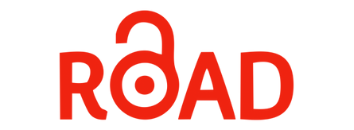Supply Chain Performance of SMEs: The Role of Triple-A Strategy
DOI:
https://doi.org/10.24002/kinerja.v25i1.3588Abstract
Agility, adaptability, and alignment (henceforth referred as triple-A) are supply chain strategy that supports sustainable competitive advantage. The previous studies found that triple-A is a principle to achieve the superior supply chain performance. However, a study that investigate the triple-A of SME, especially in culinary industry is still limited. This study aims to investigate the effect of triple-A towards SME supply chain performance in culinary industry. Using convenience sampling technique, 98 SMEs were involved in this study. The results of the multiple regression analysis show that the triple-A supply chain strategy has a significant effect on supply chain performance. This finding explain that SME supply chain performance are affected by their ability in managing supply chain strategy that categorized as agility, adaptability, and alignment. This finding give an empirically supports that agility, adaptability, and alignment are antecedent variables of SME supply chain performance.
Keywords: Triple-A, agility, adaptability, alignment, supply chain, performance.
References
Alfalla-Luque, R., Machuca, J. A., & Marin-Garcia, J. A., 2018. Triple-A and competitive advantage in supply chains: Empirical research in developed countries. International Journal of Production Economics, 203, pp.48-61.
Attia, A., 2015. Testing the effect of marketing strategy alignment and triple-A supply chain on performance in Egypt. EuroMed Journal of Business, 10(2), pp.163–180.
Baker, P., 2008. The design and operation of distribution centres within agile supply chains. International Journal of Production Economics, 111(1), pp.27-41.
Bortolini, M., Accorsi, R., Gamberi, M., & Pilati, F., 2019. A model to enhance the penetration of the renewables to power multistage food supply chains. In Sustainable Food Supply Chains (pp. 305-315). Academic Press.
Bryson, J.M., 2004. Strategic Planning for Public and Nonprofit Organizations: A Guide to Strengthening and Sustaining Organizational Achievement. 3rd ed. San Francisco: Jossey-Bass.
Chan, H.K., Wang, W.Y.C., Luong, L.H.S. and Chan, F.T.S., 2009. Flexibility and adaptability in supply chains: a lesson learnt from a practitioner. Supply Chain Management: An International Journal, 14(6), pp.407-410.
Chen, I.J. & Paulraj, A., 2004. Towards a theory of supply chain management: the constructs and measurements. Journal of Operations Management, 22(2), pp.119-150.
Christopher, M. and Towill, D.R., 2000. Supply chain migration from lean and functional to agile and customized. Supply Chain Management: An International Journal, 5(4), pp.206-213.
Forsberg, J. & Towers, N., 2007. Creating agile supply networks in the fashion industry. The Journal of the Textile Institute, 98(4), pp.377-386.
Garver, M.S. & Mentzer, J.T., 1999. Logistics research methods: employing structural equation modeling to test for construct validity. Journal of Business Logistics, 20(1), pp.33-57.
Green, K.W. Jr and Inman, R.A., 2005. Using a just-in-time selling strategy to strengthen supply chain linkages. International Journal of Production Research, 43(16), pp.3437-3453.
Khan K, A., Bakkappa, B., Metri, B. A., & Sahay, B. S., 2009. Impact of agile supply chains’ delivery practices on firms’ performance: cluster analysis and validation. Supply Chain Management: An International Journal, 14(1), pp.41–48.
Lambert, D.M. and Cooper, M.C., 2000. Issues in supply chain management. Industrial Marketing Management, 29(1), pp.65-83.
Marin-Garcia, J. A., Alfalla-Luque, R., & Machuca, J. A., 2018. A Triple-A supply chain measurement model: validation and analysis. International Journal of Physical Distribution & Logistics Management, 48(10), pp.976-994.
McCullen, P., Saw, R., Christopher, M. & Towill, D., 2006. The F1 supply chain: adapting the car to the circuit – the supply chain to the market. Supply Chain Forum: International Journal, 7(1), pp.14-23.
Molla, A, & Licker, P. S., 2005. eCommerce adoption in developing countries: a model and instrument. Information & Management, 42(6), pp.877-899.
Newman, W.H., 1992. Focused joint ventures’ in transforming economies. Academy of Management Executive, 6(1), pp.67-75.
Nguyen, T. T. H., 2017. Wal-Mart’s successfully integrated supply chain and the necessity of establishing the Triple-A supply chain in the 21st century. Journal of Economics & Management, 29(3), pp.102-117.
Lee, H.L., 2004. The triple-A supply chain. Harvard Business Review, 82(10), pp.102-112.
Rosenzweig, E.G., Roth, A.V. and Dean, J.W. Jr., 2003. The influence of an integration strategy on competitive capabilities and business performance: an exploratory study of consumer products manufacturers. Journal of Operations Management, 21(4), pp.437-456.
Richey, R.G., Tokman, M. & Wheeler, A.R., 2006. A supply chain manager selection methodology: empirical test and suggested applications. Journal of Business Logistics, 27(2), pp.163-190.
Russel, R.S. & Taylor, B.W., 2011. Operations and Supply Chain Management. 7th ed. Danvers: John Wiley and Sons.
Sekaran, U. & Bougie, R., 2016. Research Methods for Business. 7th ed. Chichester: John Wiley & Sons.
Stevenson, M. & Spring, M., 2007. Flexibility from a supply chain perspective: definition and review. International Journal of Operations & Production Management, 27(7), pp.685-713.
Tang, C. & Tomlin, B., 2008. The power of flexibility for mitigating supply chain risks. International Journal of Production Economics, 116(1), pp.12-27.
Thomas, R., 2008. Exploring relational aspects of time-based competition. International Journal of Physical Distribution & Logistics Management, 38(7), pp.540-550.
Vanderhaeghe, A. and de Treville, S, 2003. How to fail at flexibility. Supply Chain Forum: An International Journal, 4(1), pp.64-73.
Wang, L., Keshavarzmanesh, S. & Feng, H-Y., 2008. Design of adaptive function blocks for dynamic assembly planning and control. Journal of Manufacturing Systems, 27(1), pp.45-51.
Whitten, G.D, Green Jr, K.W, & Zelbst, P.J., 2012. Triple-A Supply Chain Performance. International Journal of Operations & Production Management, 32(1), pp.28-48.
Wu, C. and Barnes, D.A., 2012. Dynamic feedback model for partner selection in agile supply chains. International J. Operations and Production Management, 32(1), pp.79-103.
Yusuf, Y. Y., Gunasekaran, A., Musa, A., Dauda, M., El-Berishy, N. M., & Cang, S., 2014. A relational study of supply chain agility, competitiveness and business performance in the oil and gas industry. International Journal of Production Economics, 147, pp.531–543.














